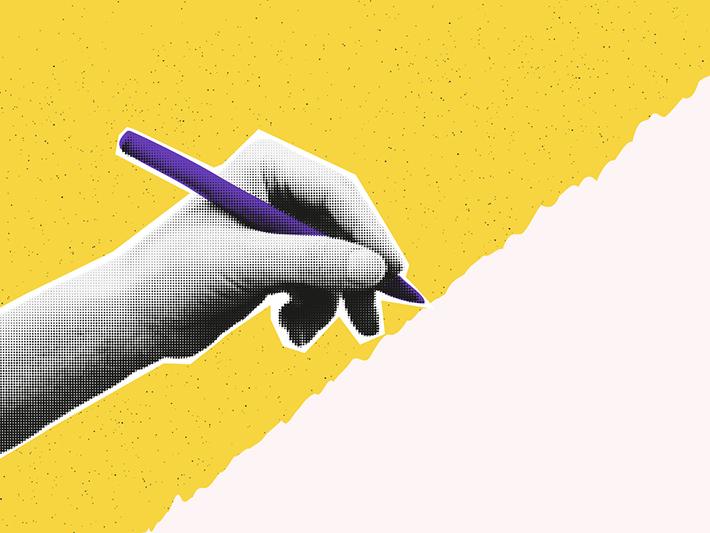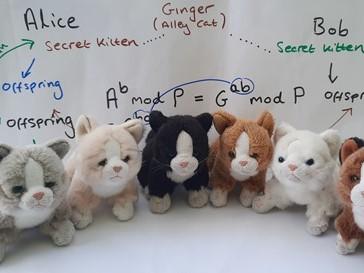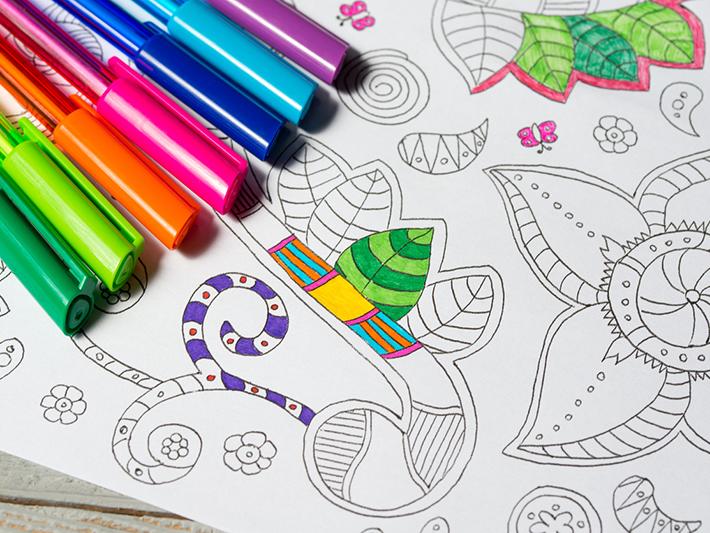Telling creative students to take risks is easy. Helping them feel ready to do so is something else entirely.
Before they even put pen to paper, many are already carrying a heavy load. They’ve grown up in systems that condition them to be safe, perfect and constantly productive. Ahead of them is an industry that asks its creatives to be bold, original and tenacious but rarely shows them how.
To get brave ideas from students, we need to build environments where risk feels possible, not paralysing. Because when a student’s head is full of doubt, there’s no room left for ideas.
Why students don’t feel free to take creative risks
When I ask students what’s blocking their creativity, the long and growing list of barriers includes common reoccurring themes.
Standardised schooling has taught them to follow instructions and learn by rote. Students arrive at university having spent years in a system that prioritises outcomes over exploration. They’ve learned to associate success with giving the “correct” answer rather than asking better questions.
- Spotlight guide: Creativity in higher education
- Spark creativity in your students – and boost their employability
- Campus webinar: The art of bringing creativity and fun into the classroom
Social media has created a culture of polished perfection, fuelling self-doubt and comparison and a need for validation. It distorts what good work looks like and how quickly it should appear.
The fear of being “cringe” means boldness today often feels like a risk, not just of failure but of social embarrassment. Standing out from the crowd, once a facet of every wayward creative, has been replaced by conformity, and the need to fit in and not draw attention to yourself.
All this is happening against a backdrop of economic precarity, soaring rents and an undervalued creative sector. Some students arrive already burnt out, stuck in a constant state of stress.
So, what does this mean?
Curiosity feels inefficient. Results-driven education has made open-ended thinking feel wasteful. Students stop asking: “What if?” and start asking: “What do I need to do?” In creative work, where meandering paths often lead to the best outcomes, this mindset blocks momentum.
Mistakes feel dangerous. When every task feels high stakes, students develop an aversion to getting it wrong. They stop seeing mistakes as part of the process and start viewing them as personal failures. But creative work needs missteps – it thrives on them. If students have been taught to fear failure, they’ll stick to safe ideas: polished, tidy and predictable.
Risk feels like exposure. In a culture where sincerity is mocked and visibility feels risky, students may fear not failure but embarrassment. Even basic presentation skills become a source of anxiety. Standing out, once the mark of a curious creative, now feels dangerous. So, they stay quiet. Keep things safe. The result? Bold ideas are filtered out before they reach the page. Work becomes muted, cautious, edited for peer approval.
Help students name what’s blocking them
That’s why I start the year with a different kind of brief. It’s called DNA, and it doesn’t ask for a pitch, poster or campaign. It asks students to look inward.
They’re challenged to identify one thing that’s limiting their creative confidence – whether that’s fear of failure, fear of judgement, fear of presenting ideas – and then to design a solution. I am not looking for a “fix”, but a personal framework for moving forward.
They might try a small habit shift, a new mindset or a playful stretch. From giving themselves permission to fail to deliberately making “messy” work just to get unstuck. One student, who identified that she can’t think when she’s stressed, designed a beautiful acrostic motivational bracelet reminding her to “take a breath”.
Once you name what’s holding you back, you can start to move past it. And sometimes, even a small, habitual shift is enough to unlock momentum.
What educators can do
To help students feel free enough to take creative risks, educators can:
- Name the invisible barriers. Encourage students to identify internal blockers like perfectionism or fear of judgement, not just surface-level issues like time management.
- Design low-stakes opportunities to fail. Build regular chances to experiment, reflect and misstep without consequence. Deliberately challenge your students to create “bad” versions of their work.
- Shift the focus from polish to progress. Celebrate curiosity, effort and iteration, not just the finished product.
This isn’t about getting perfect work; it’s about nurturing resilient, curious learners who feel confident enough to try.
Their freedom to take risks starts with us
We can’t expect students to take creative risks if we don’t give them the psychological safety to do so. Before bold ideas come to life, students need to feel free, free from fear, perfectionism and pressure to perform.
That freedom starts with us.
Let’s build learning spaces where curiosity is rewarded, mistakes are expected, and every student has permission to play.
David Thompson is a senior lecturer in creative advertising at the University of Lincoln.
If you would like advice and insight from academics and university staff delivered direct to your inbox each week, sign up for the Campus newsletter.




comment